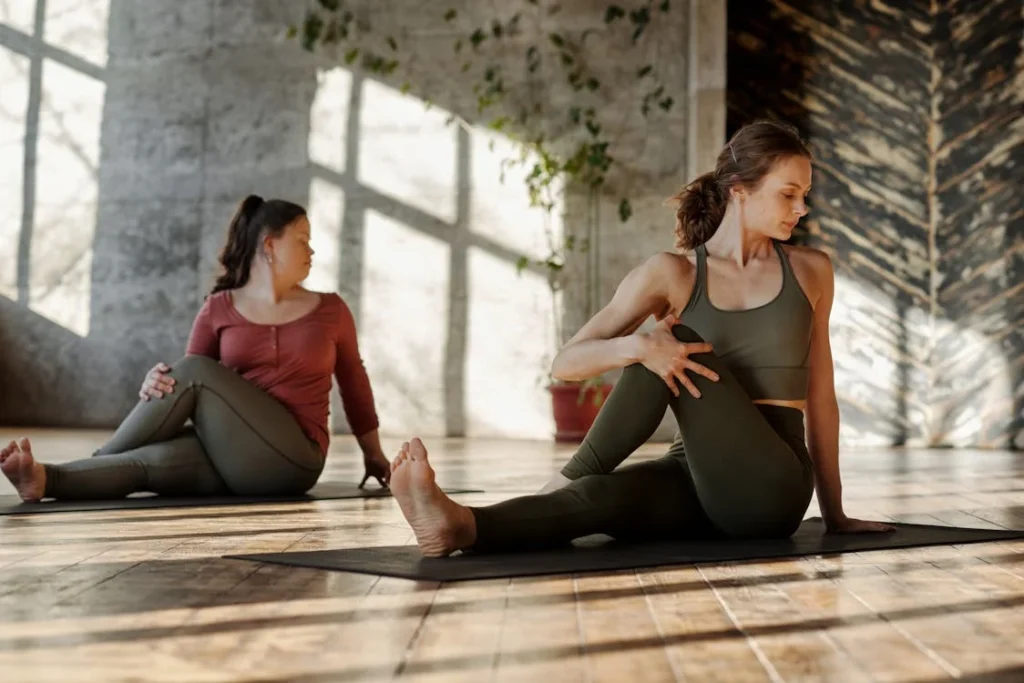Losing a limb changes how the body moves, but it does not have to limit your ability to live an active and fulfilling life. For many amputees, regaining balance and flexibility is one of the biggest challenges. These two factors are essential for walking, standing, and even using a prosthetic with ease. One highly effective way to improve them is through yoga.
Yoga is not just about physical movement; it helps connect the body and mind. It teaches awareness, control, and strength—all of which are useful for amputees. By practicing yoga regularly, you can enhance your stability, increase flexibility, and build confidence in your movement.
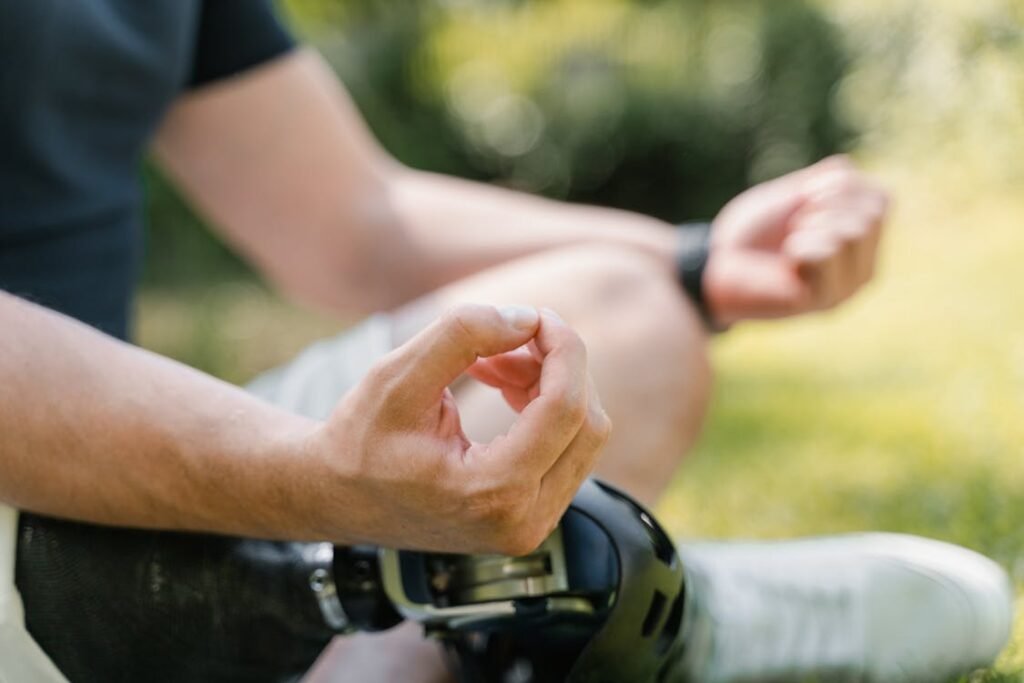
The Role of Yoga in Restoring Balance and Flexibility
Yoga is a powerful practice that can help amputees regain balance and flexibility, both of which are essential for day-to-day movement.
Whether you use a prosthetic limb or rely on your remaining limbs for support, yoga can train your body to move more smoothly and comfortably.
The beauty of yoga lies in its ability to be adapted to any body type and ability level, making it accessible for amputees at different stages of recovery and mobility.
Understanding Balance After Amputation
Balance is one of the first challenges that amputees face, whether they have lost an arm or a leg. The body naturally adjusts to compensate for the missing limb, which can sometimes lead to instability.
If you are using a prosthetic, learning to balance with it takes time and practice. Yoga helps by strengthening the core muscles, which are the foundation of stability.
When the core is strong, the body is better able to distribute weight evenly, reducing the chances of falling or straining other muscles. Many yoga poses engage the core without requiring intense movement, making them ideal for beginners.
Even seated yoga postures can activate the abdominal muscles and improve overall stability. By practicing these movements regularly, the body becomes more aligned, and everyday activities like standing up, walking, or reaching for an object become easier.
Improving Flexibility for Better Movement
Flexibility is equally important because it allows the body to move freely without stiffness or pain. Amputees often experience tightness in the muscles due to compensation. For example, if one leg is missing, the other leg may bear extra weight, leading to muscle stiffness.
Similarly, if an arm is amputated, the shoulder and back muscles may tighten due to the imbalance.
Yoga stretches these muscles in a gentle and controlled way, helping them become more flexible over time. When the muscles are relaxed and elongated, movement feels more natural and effortless.
This is especially helpful for those using prosthetics, as increased flexibility can make it easier to adjust to the artificial limb.
The Connection Between Breath and Movement
One of the unique aspects of yoga is its focus on breath control, known as “pranayama.” Breathing deeply and intentionally while moving allows the body to relax and perform better.
For amputees, controlled breathing can help with posture, coordination, and even pain management.
By learning to sync breath with movement, yoga becomes more than just a physical exercise. It turns into a mindful practice that teaches patience and awareness.
When you focus on your breath, you become more connected to your body, making it easier to notice small improvements in balance and flexibility over time.
Yoga is not about perfection; it is about progress. Every stretch, pose, and breath contributes to better movement and increased confidence. With consistency, even the simplest yoga movements can bring noticeable changes, making daily life easier and more comfortable.

How Yoga Strengthens the Body and Mind for Amputees
Yoga is not just about improving physical balance and flexibility; it also strengthens the mind. Amputees often experience emotional and mental challenges while adjusting to their new reality.
Yoga provides a holistic approach that nurtures both the body and mind, creating a sense of control, calmness, and confidence.
Through regular practice, it becomes easier to manage stress, improve concentration, and develop a more positive outlook on mobility and independence.
Building Strength for Stability
Strength plays a major role in how well the body adapts to movement after amputation. Without strong muscles, even simple tasks like standing, walking, or shifting weight can feel difficult.
Yoga helps build strength gradually by using body weight instead of external resistance. This makes it a safe and natural way to develop endurance without putting too much strain on the body.
For leg amputees, poses that engage the core and lower body can improve overall stability, reducing the risk of falls. Seated yoga can be just as effective, helping to activate the abdominal muscles, back, and arms, which all contribute to maintaining balance.
Over time, stronger muscles make it easier to use a prosthetic and move more naturally.
For arm amputees, yoga enhances upper body control by focusing on shoulder alignment and spinal strength.
By practicing movements that open up the chest and stretch the back, tension is released, making everyday activities like reaching, carrying objects, or even writing more manageable.
Increasing Body Awareness and Coordination
One of the biggest adjustments for amputees is relearning how to move in a way that feels natural. The body has to find a new sense of balance, and sometimes, this process can feel frustrating.
Yoga helps by increasing body awareness, allowing individuals to understand how their weight shifts and how different muscles work together.
With practice, movements become more fluid, and coordination improves. This is especially helpful for those using a prosthetic, as it teaches the body how to integrate the artificial limb into daily movement patterns.
Yoga encourages slow and controlled motions, which help develop muscle memory and make balance adjustments feel more intuitive.
Reducing Pain and Discomfort
Many amputees experience residual limb pain, phantom limb sensations, or discomfort caused by overworked muscles. Yoga can be an effective way to manage these issues naturally.
Gentle stretching releases tension and improves blood circulation, which can reduce pain and inflammation.
Deep breathing techniques practiced in yoga also play a key role in pain management. When the body is relaxed, it becomes easier to cope with discomfort.
Focusing on breath control can create a calming effect that reduces stress, making it easier to handle any physical challenges that come with using a prosthetic.
Gaining Mental Strength and Confidence
Adjusting to life after an amputation requires mental resilience. It is easy to feel frustrated when mobility is limited or when simple movements take more effort. Yoga fosters patience and self-acceptance by encouraging individuals to focus on progress rather than limitations.
By practicing yoga regularly, confidence naturally increases. As balance improves and flexibility increases, movement becomes easier, and everyday tasks feel less overwhelming.
This sense of achievement builds motivation, creating a more positive mindset toward physical activity.
Yoga is not about pushing the body beyond its limits. It is about learning to work with it in a way that feels comfortable and rewarding.
Whether you are using a prosthetic limb or relying on your remaining limbs for support, yoga provides a safe space to grow stronger, both physically and mentally.

Getting Started with Yoga as an Amputee
Starting yoga for the first time may feel intimidating, especially if you are an amputee adapting to a new way of moving. However, yoga is one of the most adaptable forms of exercise, and it can be modified to suit your abilities.
Whether you have lost a limb recently or have been living with limb loss for years, yoga can be tailored to your comfort level. The key is to begin with simple movements, listen to your body, and gradually build confidence.
Choosing the Right Yoga Style
Not all yoga styles are the same, and some are more suited for amputees than others. Gentle forms of yoga, such as Hatha yoga, are excellent for beginners as they focus on slow, controlled movements.
Restorative yoga is another great option because it emphasizes relaxation and stretching rather than intense physical effort. If you are looking to build strength, Vinyasa yoga offers a flowing sequence of poses that help with coordination and endurance.
Chair yoga is a fantastic choice for those who are not comfortable standing for long periods or are still adjusting to balance changes.
It allows you to perform poses while seated, making it easier to focus on stretching, breath control, and core activation. Regardless of the style you choose, the goal is to find a practice that feels good for your body.
Finding a Supportive Environment
Practicing yoga in a supportive environment can make all the difference in your experience. If you are new to yoga, consider joining a class that is adaptive or inclusive for people with disabilities.
Many yoga instructors are trained to modify poses based on individual needs, ensuring that you feel safe and comfortable throughout the practice.
If an in-person class is not accessible, online yoga sessions designed for amputees or individuals with mobility challenges can be a great alternative. Virtual classes allow you to practice in the comfort of your own home while still receiving guidance.
Simple Movements to Start With
For beginners, focusing on foundational movements is key. Gentle stretches that open the hips, strengthen the core, and improve spinal alignment are a great place to begin.
Seated forward bends can help with flexibility, while simple twisting poses can release tension in the back. If you feel comfortable standing, practicing weight shifts from one side to another can improve balance and stability.
Breathwork is just as important as movement. Practicing slow, deep breaths helps relax the body and makes each movement feel more natural. Over time, breath control can improve coordination and reduce stress, making daily activities easier.
Progressing at Your Own Pace
Yoga is not about how quickly you can master a pose—it is about connecting with your body and moving in a way that feels right for you.
Some days, you may feel more flexible or balanced than others, and that is completely normal. The key is to remain patient with yourself and celebrate small improvements along the way.
Consistency is more important than intensity. Practicing even a few minutes a day can make a noticeable difference in how your body moves and feels. With time, you will start to see improvements in balance, flexibility, and overall comfort in your daily activities.
Yoga is an empowering practice that allows you to take control of your mobility and well-being. No matter where you are in your journey, it offers a way to strengthen your body, calm your mind, and restore confidence in your movements.
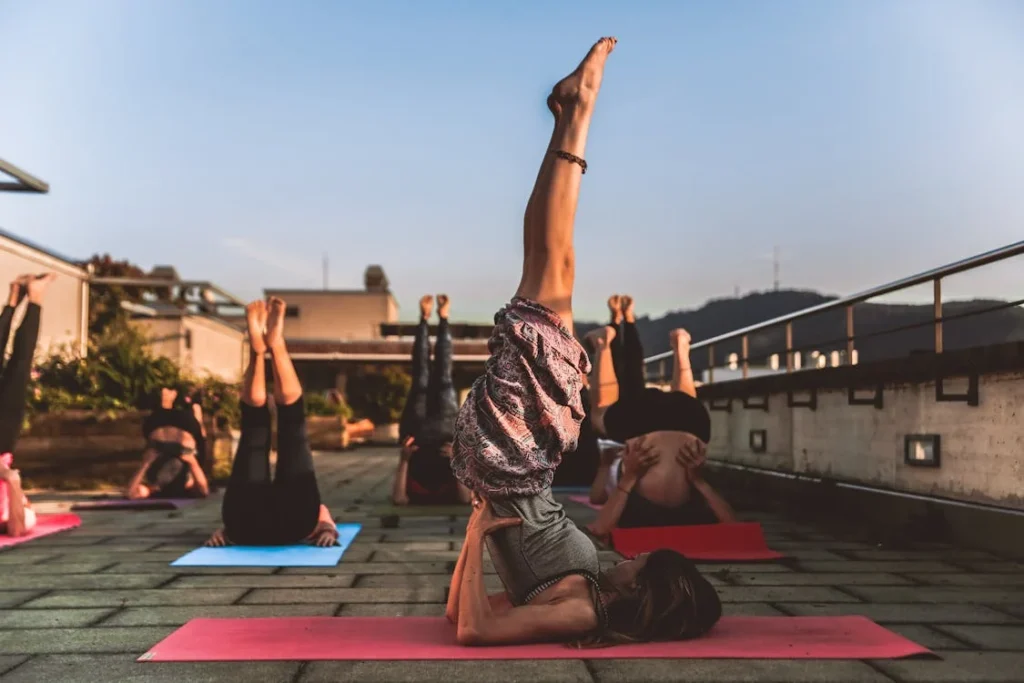
Overcoming Challenges and Staying Motivated
Starting any new physical activity comes with challenges, and yoga is no different. As an amputee, you may face unique obstacles, whether it is difficulty balancing, muscle tightness, or feeling uncertain about how your body will respond to certain movements.
These challenges are normal, but they should not stop you from experiencing the benefits of yoga. The key is to approach your practice with patience, adaptability, and a positive mindset.
Managing Frustration and Setbacks
It is natural to feel frustrated when a movement does not come easily, especially when adjusting to life with a prosthetic limb or a new way of moving.
Yoga teaches the importance of self-compassion. Instead of focusing on what you cannot do, focus on what you can. Every small improvement is progress. Some poses may take time to master, and some days will feel harder than others, but that is all part of the journey.
If you find yourself struggling with a particular pose, do not be discouraged. Modify it in a way that works for you. Yoga is meant to be flexible, and there is no right or wrong way to do it as long as it feels good for your body.
Over time, as your strength and flexibility improve, movements that once seemed impossible will become easier.
Adjusting to Balance Changes
Balance can be one of the biggest challenges for amputees practicing yoga. Without the full support of all limbs, the body has to work differently to maintain stability.
This is where core strength and body awareness play a crucial role. If standing poses feel too difficult, start with seated or floor-based movements that allow you to build strength without the fear of falling.
Using props like yoga blocks, straps, or even a wall for support can also make balancing more manageable. Gradually, as you gain confidence, you can try more weight-bearing movements that challenge your stability in a controlled way.
Dealing with Muscle Stiffness and Discomfort
Muscle tightness is common for amputees, especially when the body compensates for a missing limb. Stiffness in the hips, back, and shoulders can make certain movements uncomfortable. The good news is that yoga itself is one of the best ways to relieve muscle tightness.
If you experience discomfort during a stretch, ease into it gently rather than forcing the movement. Hold each pose for a few breaths to allow the muscles to relax. The more you practice, the more flexible your muscles will become, reducing stiffness over time.
Staying Consistent with Your Practice
One of the most important factors in seeing progress with yoga is consistency. Practicing for just a few minutes a day is better than doing an intense session once a week.
The more regularly you practice, the more natural the movements will feel, and the more benefits you will experience.
Setting small goals can help keep you motivated. Instead of aiming to master a difficult pose right away, focus on feeling more stable in simple movements first.
Celebrating small victories, such as holding a stretch longer or improving balance for a few extra seconds, will keep you encouraged.
Practicing with a friend, joining a class, or following an online instructor can also make yoga more engaging. Having support and guidance can help keep you accountable and make the experience more enjoyable.
Turning Yoga into a Lifelong Habit
Yoga is not just a short-term solution for balance and flexibility—it is a lifelong practice that can continue to benefit your body and mind for years to come.
The more you incorporate it into your routine, the more natural it will feel. Over time, you will notice that everyday movements become easier, whether it is walking, bending, reaching, or using a prosthetic with greater ease.
Beyond the physical benefits, yoga creates a sense of calmness and confidence that extends into all areas of life. It teaches patience, self-acceptance, and resilience—all of which are valuable for amputees adjusting to new challenges.
By staying committed to your practice, adapting movements to your needs, and celebrating your progress, yoga can become an empowering tool that helps you move through life with greater strength, ease, and balance.
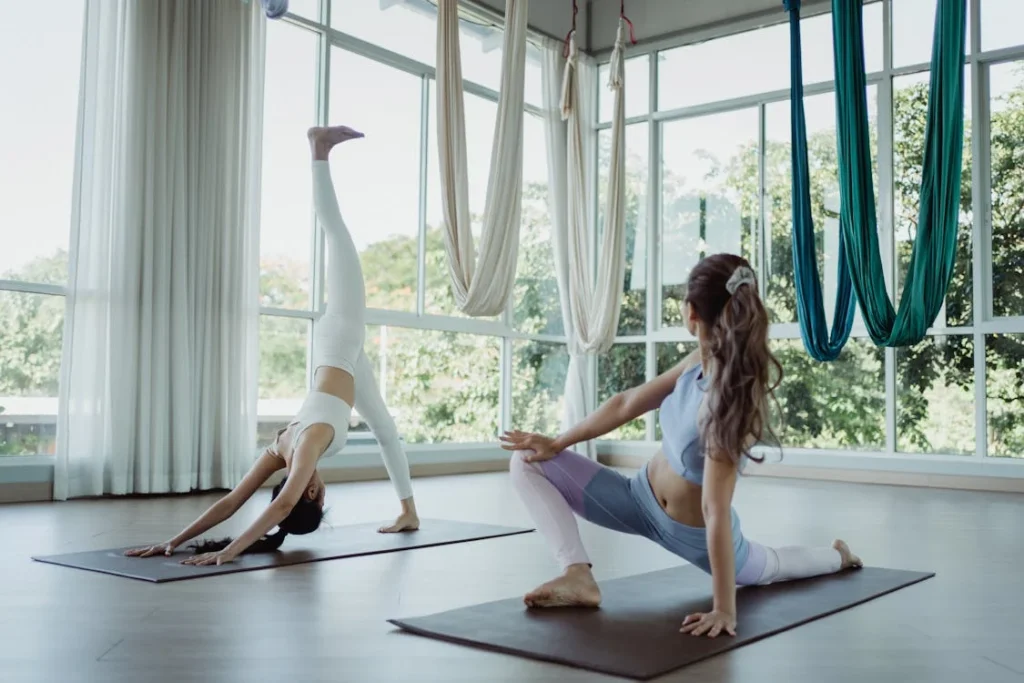
The Role of Mindfulness in Yoga for Amputees
Yoga is more than just stretching and physical movement; it is deeply connected to mindfulness, which can be incredibly beneficial for amputees.
Mindfulness means being fully present in the moment, aware of your body, breath, and emotions without judgment. It helps shift focus from physical limitations to personal growth, creating a deeper connection between the mind and body.
Cultivating a Positive Mind-Body Connection
After an amputation, it is common to feel disconnected from the body. Some people struggle with accepting their new form, while others may experience phantom limb sensations, making it difficult to trust their movements.
Yoga, when practiced with mindfulness, bridges this gap by bringing awareness to how the body moves and feels.
By focusing on breath and slow, controlled movements, yoga helps amputees develop a sense of control and familiarity with their bodies.
Instead of seeing a missing limb as a limitation, yoga encourages an appreciation of what the body can still do. This shift in perspective is crucial for building confidence and finding comfort in movement.
Using Breathwork to Enhance Stability and Focus
Breath is a powerful tool in yoga. Controlled breathing, known as “pranayama,” helps the body relax, improves focus, and enhances movement.
For amputees, breathwork can make a significant difference in balance and coordination. When movements are paired with steady breathing, the body feels more stable, and transitions between poses become smoother.
Deep breathing also helps calm the nervous system, reducing stress and anxiety. Many amputees experience frustration when adjusting to new ways of moving, but mindful breathing can ease tension and make the process feel more natural.
By practicing breath control daily, even outside of yoga sessions, amputees can improve posture, manage stress, and increase overall comfort in their bodies.
Overcoming Fear and Mental Barriers
One of the biggest challenges for amputees starting yoga is fear—fear of falling, fear of failing, or fear of discomfort. Mindfulness helps address these fears by shifting the focus away from negative thoughts and toward the present moment.
Instead of worrying about whether a pose is being done “correctly,” mindfulness encourages an appreciation of the effort being made. Every movement, no matter how small, is a step toward improvement.
Over time, practicing yoga with mindfulness helps build resilience, making it easier to push past mental barriers and approach physical activity with more confidence.
Finding Peace and Relaxation Through Yoga
Many amputees deal with stress, anxiety, and even post-traumatic emotions related to their limb loss. Yoga offers a space to slow down and find peace within the body.
Through meditation and relaxation techniques, it provides an opportunity to release mental tension and reconnect with a sense of inner calm.
Simple mindfulness exercises, like focusing on the breath or scanning the body for areas of tension, can make a significant difference in how an amputee feels physically and emotionally. With time, these practices create a sense of stability, not just in movement but in everyday life.
By combining physical movement with mindfulness, yoga becomes more than just an exercise—it becomes a powerful tool for healing, self-discovery, and personal growth.
It allows amputees to not only regain balance and flexibility but also develop a deeper connection with themselves, fostering a sense of strength and wholeness from within.
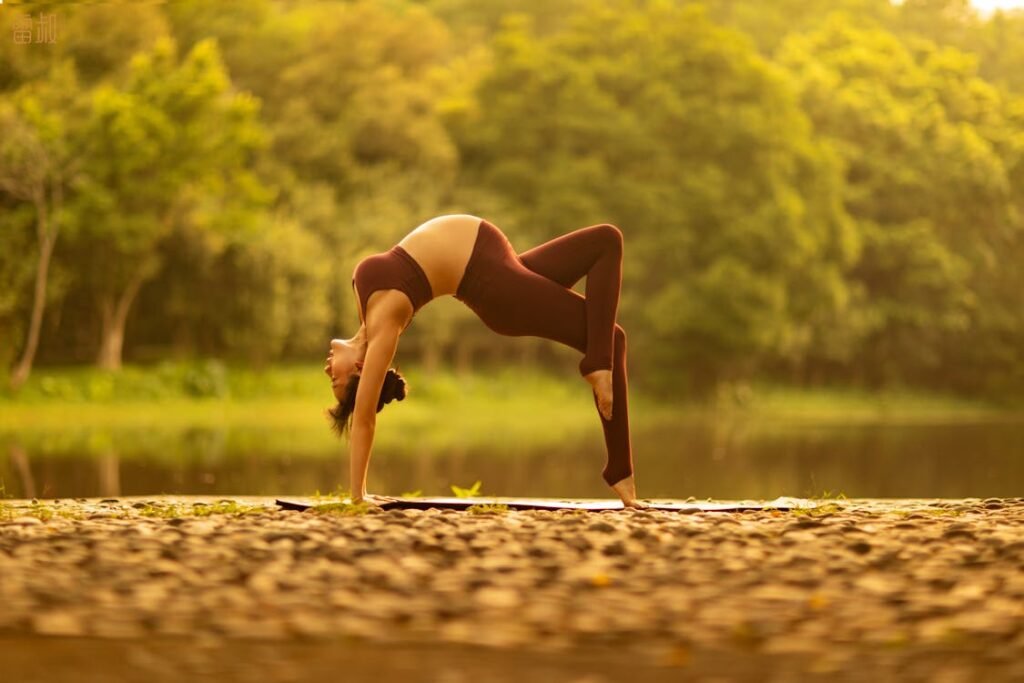
How Yoga Enhances Prosthetic Adaptation and Comfort
For many amputees, using a prosthetic limb is an essential part of daily life. However, adjusting to a prosthetic can be physically and mentally challenging.
Yoga can play a crucial role in making this transition smoother by improving muscle coordination, reducing discomfort, and helping the body adapt to the artificial limb more naturally.
Strengthening the Muscles That Support a Prosthetic
When an amputee starts using a prosthetic, the body must compensate for the missing limb by engaging different muscle groups. This can lead to overuse of certain muscles, while others may weaken due to underuse.
Yoga helps create a balance by strengthening the entire body, ensuring that no single area is carrying too much strain.
For lower-limb amputees, strong core and hip muscles are essential for walking confidently with a prosthetic. Many yoga poses focus on building core stability, which improves posture and makes weight distribution more even.
Stronger muscles in the back and abdomen also help relieve pressure on the spine, reducing common issues like lower back pain.
For upper-limb amputees, yoga strengthens the shoulders, chest, and remaining arm, making it easier to perform everyday activities with a prosthetic hand or arm.
Increased strength in these areas improves grip, control, and endurance when using a prosthetic for extended periods.
Improving Coordination for Smoother Movements
One of the biggest hurdles for prosthetic users is making movements feel natural. At first, walking, reaching, or even standing for long periods can feel awkward or unsteady. Yoga improves overall coordination by training the body to move fluidly and in sync with the prosthetic.
Many yoga poses emphasize slow, deliberate transitions between movements, helping the body and brain learn how to shift weight effectively.
Over time, this increased control makes prosthetic use feel more intuitive and less forced. As balance and stability improve, everyday activities such as walking up stairs or carrying objects become easier and more comfortable.
Reducing Prosthetic-Related Discomfort
Wearing a prosthetic for long hours can cause discomfort due to pressure points, muscle strain, and misalignment. Yoga helps alleviate this by promoting better posture and flexibility.
When the muscles are stretched and properly aligned, the body distributes pressure more evenly, reducing soreness and fatigue.
For lower-limb amputees, yoga improves hip flexibility, preventing stiffness that can develop from standing or walking with a prosthetic. Gentle stretches relieve tension in the legs and lower back, making movement smoother and more comfortable.
For upper-limb amputees, yoga eases tension in the neck, shoulders, and spine, areas that often bear extra strain when using a prosthetic arm. By improving mobility in these regions, yoga helps reduce pain and discomfort that can come from repetitive use.
Developing Mental Comfort with a Prosthetic
Adjusting to a prosthetic is not just about physical ability—it is also about developing confidence in using it. Some amputees struggle with feeling disconnected from their prosthetic limb, especially in the early stages of use.
Yoga helps bridge this gap by increasing body awareness and mindfulness.
By focusing on movements, breath, and sensations, yoga allows prosthetic users to become more in tune with their bodies. Instead of seeing the prosthetic as something separate, yoga encourages amputees to integrate it into their natural movement patterns.
This shift in perspective builds confidence and makes using a prosthetic feel less like an adjustment and more like a part of everyday life.
Yoga provides a holistic way to enhance prosthetic adaptation by strengthening muscles, improving coordination, reducing discomfort, and fostering a positive mindset.
With regular practice, amputees can experience greater ease, stability, and confidence in their movements, making their prosthetic feel like a natural extension of their body.
Conclusion
Yoga offers amputees a powerful way to regain balance, improve flexibility, and build confidence in movement. More than just a form of exercise, it strengthens the body, calms the mind, and enhances overall well-being. Whether you are adjusting to life with a prosthetic or simply looking for a way to move more comfortably, yoga provides a safe and adaptable practice that meets you where you are.
Through mindful breathing, controlled movements, and gradual strength-building, yoga helps amputees reconnect with their bodies and develop greater ease in daily activities. It also plays a crucial role in reducing discomfort, improving coordination, and making prosthetic use feel more natural.
At Robobionics, we believe that true independence goes beyond prosthetic technology—it includes lifestyle changes that promote confidence and mobility. Incorporating yoga into your routine can be a game-changer, making movement feel more natural and enjoyable. Start small, stay consistent, and celebrate every step forward.
If you’re looking for additional support in adapting to your prosthetic, explore our innovative solutions like Grippy™, designed to enhance your mobility and comfort. Book a free demo today and take the next step toward greater independence!



